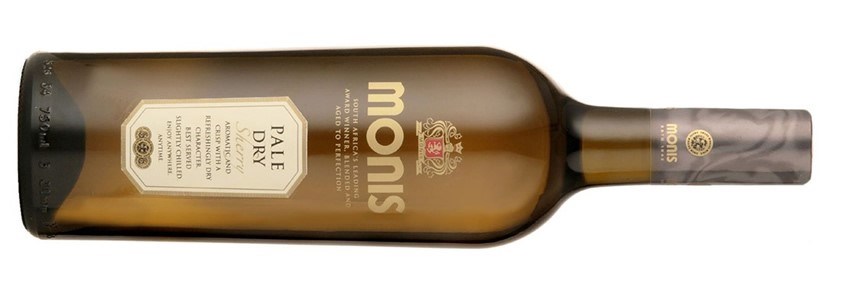In South Africa “sherry-style wines” arrived at the beginning of the 1900s, were first recorded in 1933, at Nederburg. Dr. C Niehaus “discovered flor yeast” for the first time in the vineyards of Vergenoegd in 1936. Other companies associated with sherry-style wines are Monis, KWV, Douglas Green, Orange River Cellars, Mooiuitsig Wine Cellars – under different labels.
In fact, Platter’s 2019 summarizes our “sherry-style wines” as:
- 4 Stars: KWV Sherry-style wines (3), Monis, Spice Route
- 3.5 stars: Monis (2)
- 2.5 stars: Douglas (Not Tasted), Huguenot (2: Ship Fortified and Old Brown), Karusa, Picardi ReBel
Our per capita consumption (according to the South African Wine Industry Directory) on “fortified wines” (ie. with Muscadel, Jerepigo etc) in 2017 was 0.59 litres. In 2004 this same value was 0.64 litres. Basically fortified wines make up approx. 2% share of the alcoholic beverage market in SA.

As Conrad Louw, CWM explained in his dissertation, “Sherry: Departure or Renaissance”, see www.icwm.co.za, there are a number of factors which make our “sherry-style wines” different to the Spanish original (eg. the grape variety, the climate, the specific soils…), but our passion, for drinking even dry “sherry-style wines”, is negligent. Have we forgotten the significance of Sherry?
We even grow the grape variety Palomino, although I only know of Blackwater, AA Badenhorst and Elemental Bob. Spice Route makes a dry reserve sherry-style wine from Sauvignon Blanc grapes. We have certainly learnt to offer “sherry-style wines”, Fino or Pale Dry in smaller bottles with our starters/or “Spanish” tapas and to pair the sweeter styles with everything from nuts to spicy dishes, cheeses and chocolates. The Sedgwick’s Old Brown Sherry, which costs a mere ZAR49 for a bottle has cult status in SA, and even works wonders on those winter flus!
Let us rekindle the story that makes one fall in love with this style of wine again!
The region of Jerez de la Frontera, El Puerto de Santa Maria and Sanlúcar de Barrameda form the original triangle of the most important towns, today approx. 7000 hectares, an amalgamate of Cooperatives, Bodegas (cellars) and Independent producers, at the most southern tip of Spain. This charming area, although only some 14kms from the continent of Africa, is open to a stream of migrants, has seen extreme poverty, but has found its “unique place”. The albariza soils retain moisture and the grape varieties Palomino, Pedro Ximénez and Moscatel thrive. The controlling body, the Consejo Regulador de Vinos de Jerez y Manzanilla guarantees the authenticity of the wines, and provides the specific seals, regulates and promotes the area as a whole. It is the body that offers training as a “sherry ambassador” (Formador Homologado del Vino de Jerez).
It is the charm of walking through huge cellars full of sobretablas, criadera and solera systems, with a certain cool humidity, the significance of flor, the understanding that most wines are at least 2 years in barrel (although some solera systems were founded 20 years ago) and that the ullage in dry years is up to 4%... That makes you rethink of what you have in your glass (a normal wine glass, please!).
With these pictures in mind, taste and discover the diversity in Sherry: The Dry sherries (Fino/Manzanilla, Amontillado, Oloroso, Palo Cortado), the Sweet Sherries (Moscatel, Pedro Ximénez, Dulce (de Palomino)), and then finally the Blends (Pale Dry, Pale Cream, Medium, Cream – names we know locally very well).
Just alone in the Dry Sherry category there is a diversity in flavours, between pure biological ageing under flor (rather yeasty nose, fresh dough, almonds, camomile) or then the more oxidative ageing (more nuts, “glyceric”, smooth and round, long finish), making this category extremely versatile for welcome drinks and food pairings, whether simple tapas:
(By the way, Fino and Manzanilla should always be served chilled! Truth be told: most sherries should be served “cool”!)
Look at books like “Sherry uncovered” (Beltran Domecq) and indulge in “The perfect marriage” (Heston Blumenthal).
There is more: VOS and VORS are sherries certified for their age, 20 and 30 years respectively. Although a very talked about subject, this is still a tiny part of the total sherry consumption (in Spain), yet shows how old sherries can stand up to old rums and old whiskies!
There is antagonism, there are many stories about Sherry!
Give Sherry a chance! #SHERRYLOVER
Think to yourself:
…the un-economical slow way of making sherries- thank goodness for the business of reselling oak barrels to whiskey producers,
…the flair of old towns with 3000 years of history- from muslim domination to the Phoenicians,
…the tabancos (bars) full of loud people and music, enjoying flamenco, jerez and tapas- many traditions and festivities
…
and lift that good wine glass with an exceptional “Fino” or “Palo Cortado”: Salud!